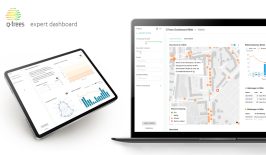At the 2009 COP conference held in Copenhagen (COP15), industrialised countries pledged that, from 2020 onwards, they would collectively raise 100 billion USD per year for climate action initiatives in developing countries. This pledge was further reaffirmed and extended at COP16 and COP21. Yet, this target was not met.
According to Organisation for Economic Co-operation and Development (OECD) measurements, climate finance provided and mobilised by developed countries for developing countries was estimated to have reached 83.3 billion USD in 2020, well short of the original target. However, even this figure is subject to controversy.
Why is analysing climate finance accurately important?
Accurately analyzing climate finance is crucial for several reasons:
- Accountability and transparency: Accurate analysis ensures that the funds allocated for climate finance are used as intended. It holds contributing parties accountable for their commitments and helps in maintaining transparency in financial transactions related to climate change initiatives.
- Effectiveness of climate policies: Precise analysis enables policymakers to assess the effectiveness of climate finance in achieving its intended goals. It helps in identifying which projects and strategies are successful and which may need adjustment or reallocation of resources.
- Resource allocation: Knowing the accurate figures allows for better allocation of resources. Decision-makers can prioritize projects based on their impact and success rates, directing funds toward initiatives that yield the most significant positive outcomes in terms of mitigating climate change or adapting to its effects.
Moving forward with Machine Learning
Anna Stünzi is one of three researchers from ETH Zurich and the University of St. Gallen who have developed a Machine Learning model to identify and classify global climate finance flows. She warns that “recipient countries, nongovernmental organisations and academics have repeatedly criticised that this figure appears to be too high”. In fact, Oxfam evaluates that the figure has been “overstated by as much as 225 percent”. The organisation points out that instruments like loans are frequently reported at face value, failing to account for repayments or other factors. Reported projects were also often found to have a lower climate focus than disclosed.
Anna argues that overestimations persist due to the absence of independent checks on self-reported figures. To enable more effective reporting in the field, she and her teammates turned to AI and developed a machine learning (ML) model for more consistent identification and classification of global climate finance flows.
Better solutions for analysing climate finance flows
The team’s model, which they call “ClimateFinanceBERT”, evaluates development cooperation projects based on their textual project descriptions. The model first “evaluates whether the projects are relevant to climate change, and then, second, and if so, to which area”. As such, the model can not only judge whether the climate focus is indeed as relevant as disclosed, but also classify what kind of cause the financial contributions went for (e.g. solar energy, forest conservation, climate-resilient infrastructure, etc). Compared to manual verification, Anna notes that the ML-based model is not only more cost-efficient but also a more consistent way to analyse climate finance data over long time frames.
The ML model developed by the team has analysed a substantial 2.7 million bilateral development assistance projects so far, sourced from the OECD’s database. Among these, 80,000 have been identified as pertinent to climate finance, amounting to a total of 80 billion USD. This, of course, reinforces concerns raised about the accuracy of reported climate finance figures. By openly sharing both their data and model, the team has expanded its applicability beyond reporting and contributing entities. Recipient countries, civil society, and academia can now utilise it to independently verify the numerical data. Consequently, the team aims to contribute to greater transparency and understanding of authentic climate finance figures.
“We hope this helps create trust among negotiating parties and deliver important information”.








